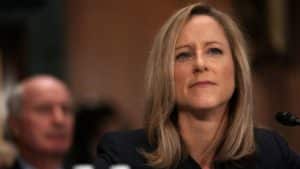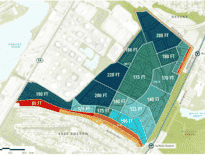Small lenders could be looking at some relief from changes to the Home Mortgage Disclosure Act that went into effect at the beginning of the year.
The Consumer Financial Protection Bureau yesterday issued a proposal to raise the coverage thresholds for collecting and reporting data about closed-end mortgage loans and home equity lines of credit under HMDA.
Specifically, the CFPB has proposed to raise the reporting threshold for closed-end mortgage loans from 25 originations to either 50 or 100. This rule would go into effect at the start of 2020.
For HELOCs, the CFPB is proposing to extend until 2022 the current temporary coverage threshold of 500 HELOCs. Once that temporary extension expires, the CFPB would set the open-end threshold permanently at 200 HELOCs.
“Today’s proposed changes would provide much needed relief to smaller community banks and credit unions while still providing federal regulators and other stakeholders with the information we need under the Home Mortgage Disclosure Act,” CFPB Director Kathleen L. Kraninger said in a statement. “The public is encouraged to submit their comments on the proposals, which will be considered by the bureau before the next step is taken.”
First enacted in 1975, HMDA requires financial institutions to report mortgage data to the public. Following the financial crisis, Dodd-Frank created the CFPB and tasked the agency with rewriting the HMDA rule.
The rewrite in 2015 required financial institutions that originate a certain amount of closed-end mortgages and HELOCs to report additional data points. These data points range from easy-to-report data such as the interest rate on a loan to more complex data points such as the borrower’s debt-to-income ratio and the combined loan-to-value ratio, which require additional calculations.
The new proposal by the CFPB continues what has been a constant stream of HMDA changes.
Financial institutions that originated over 25 closed-end mortgages were orginally required to report both traditional HMDA data and the newly-mandated data points. Institutions that originated more than 100 HELOCs were required to report HMDA data for the first time, as well as the additional data.
After soliciting feedback and receiving pushback on the rule, the CFPB agreed to raise the HELOC reporting threshold from 100 to 500.
When Congress passed a Dodd-Frank relief bill earlier this year, the law required institutions originating less than 500 mortgages to still report old HMDA data but not the additional data points. The bill also said that institutions that originate less than 500 HELOCs would be exempt from reporting any HMDA data.
Credit unions, which have been deeply concerned about the HMDA changes over the years, were pleased with the proposal.
“The CFPB’s proposed HMDA changes will help reverse the tide of burdensome regulations, which have impacted small-community lenders, including credit unions,” Carrie Hunt, executive vice president at the National Association of Federally-Insured Credit Unions, said in a statement. “Credit unions wholeheartedly reject discrimination in all forms and support the goals of HMDA. NAFCU thanks the bureau for listening to our concerns in implementing modest changes to allow more credit unions to focus on lending to those in need instead of being bogged down in red tape.”
According to the NAFCU, the CFPB estimates that if the closed-end mortgage reporting threshold was increased from 25 to 100 loans, approximately 39 percent of depository institutions covered under the current rule would be relieved of their data reporting under HMDA, while 61 percent would continue to be required to report.
Despite the victory, some still had concerns about the newly proposed HELOC threshold which, despite being put off for another two years, would lower the reporting threshold from 500 to 200 HELOCs .
“While increasing the closed-end mortgage loan threshold is a positive first step, we continue to have concerns about the CFPB’s treatment of open-end lines of credit,” Jim Nussle, president and CEO of the Credit Union National Association, said in a statement. “We have called on the CFPB to make the reporting of open-end lines of credit voluntary, as was the case prior to the 2015 HMDA rule, and we will continue to do so.”







